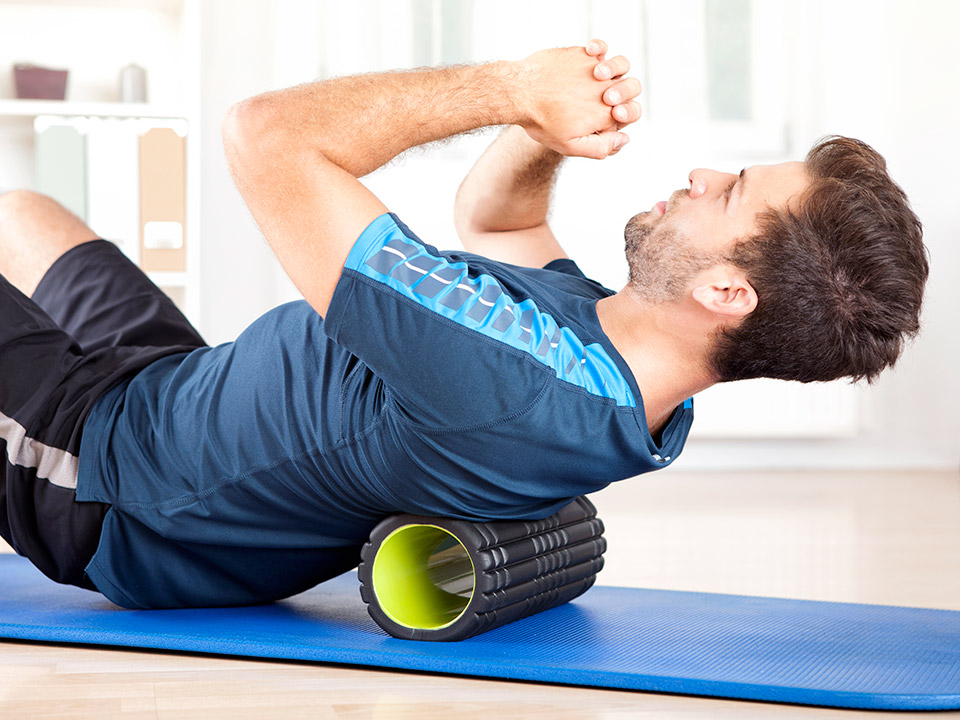Foam rolling, once an exclusive secret of professional athletes and physical therapists, has burst onto the fitness scene as an invaluable tool for people of all fitness levels. With its simple design and myriad of benefits, foam rolling has proven to be an essential addition to any workout routine. In this blog, we’ll delve into the science-backed benefits of foam rolling and provide tips and routines to optimize its use for stretching, warming up, and post-exercise or game recovery.
What is Foam Rolling?
At its core, foam rolling is a form of self-myofascial release. The fascia is a thin layer of connective tissue that encases our muscles. Over time, due to repetitive movements, injuries, or even just daily activities, fascia can become tight, leading to muscle restrictions and discomfort. Foam rolling aims to alleviate these issues, offering a method to massage away restrictions and improve overall muscle function.
Benefits of Foam Rolling
A. Enhanced Flexibility and Range of Motion: Consistent foam rolling can increase your joint range of motion and muscle flexibility. This not only aids performance but also minimizes the risk of injuries.
B. Improved Circulation: By rolling out tight spots, you promote better blood flow to the muscles. Improved circulation aids muscle repair and growth by delivering essential nutrients to muscle tissues.
C. Decreased Muscle Soreness: Delayed onset muscle soreness (DOMS) is a common aftermath of intense workouts. Foam rolling can help reduce the severity and duration of DOMS, helping you bounce back faster.
D. Muscle Activation: When used as part of a warm-up routine, foam rolling can prepare muscles for the tasks ahead by increasing blood flow and activating the nervous system.
E. Post-Exercise Recovery: Foam rolling after a workout or game can expedite recovery by reducing inflammation, improving circulation, and decreasing muscle tension.
Tips for Effective Foam Rolling
Slow and Steady
Rushing through your foam rolling routine reduces its effectiveness. Roll slowly, giving your muscles time to adapt and release tension.
Pinpoint the Pain
If you find a particularly tender spot, pause and hold the roller on this spot for 20-30 seconds to help release tension.
Consistency is Key
For maximum benefits, make foam rolling a regular part of your fitness routine.
Listen to Your Body
While foam rolling can be uncomfortable, it should never be excruciating. If it’s too painful, ease off a bit or consult a professional.
Stay Hydrated
Drinking water post-rolling aids in flushing out the toxins that are released during the process.
4. Foam Rolling Routines
A. Pre-Exercise Warm-Up:
- Calves: Sit with your legs extended, placing the roller under your calves. Roll from the ankles up to the back of the knees.
- Quads: Lie face down and place the roller under your thighs. Roll from the hips to the knees.
- Upper Back: Lie on your back with the roller beneath your upper back. Roll from the mid-back to the base of the neck.
B. Post-Exercise Recovery:
- Hamstrings: Sit with the roller under your thighs. Roll from the knees to the base of the glutes.
IT Band: Lie on your side with the roller positioned under your hip. Roll down the side of your thigh to the knee. - Lats: Lie on your side with the roller under your armpit. Roll down the side of your torso to just above the waist.
C. For Stretching:
- Adductors: Lie face down and place the roller at a 45-degree angle to the inside of your thigh. Roll from the pelvis towards the knee.
- Glutes: Sit on the roller with one foot on the opposite knee. Lean towards the elevated knee and roll on the glute.
Conclusion
The humble foam roller, with its numerous benefits, has undeniably earned its spot in the toolkit of fitness enthusiasts worldwide. By integrating this simple yet effective tool into your routine, you’re investing in improved performance, reduced injury risks, and expedited recovery. So, unroll your potential and elevate your fitness journey with the magic of foam rolling!

